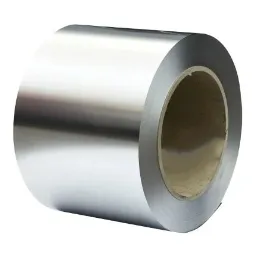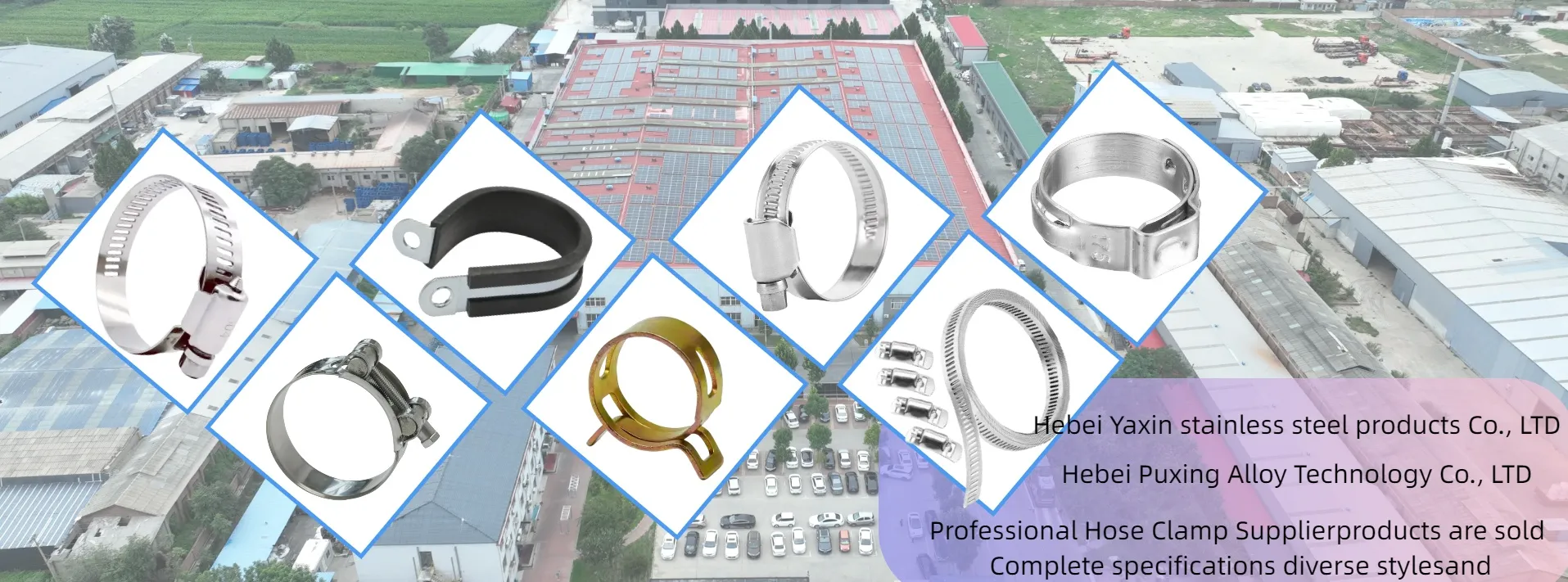- Phone:+86-17331948172 +86-0319-8862898
- E-mail: inquiry@puxingclamp.com
Jul . 24, 2025 15:35 Back to list
Stainless Steel Strip Applications
Stainless steel strip is a versatile material known for its corrosion resistance, strength, and formability, making it indispensable across multiple industries. Available in different grades (such as 304 and 316) and finishes (brushed, mirror, matte), it meets both functional and aesthetic demands. A steel strip made from stainless steel offers superior durability compared to carbon steel, while a precision stainless steel strip ensures tight tolerances for high-performance applications. This article explores the key uses, benefits, and selection criteria for stainless steel strips in various sectors.

Key Properties and Manufacturing of Stainless Steel Strip
Stainless steel strip is produced through a series of precision rolling and annealing processes to achieve the desired thickness, strength, and surface finish. The key properties that make it highly sought-after include:
Corrosion Resistance: Chromium content forms a passive oxide layer, preventing rust.
High Strength-to-Weight Ratio: Ideal for structural applications without adding excessive weight.
Formability and Weldability: Easily shaped into complex designs without losing integrity.
Hygienic Surface: Non-porous and easy to clean, making it perfect for medical and food industries.
A precision stainless steel strip undergoes additional cold rolling and finishing processes to meet exact dimensional tolerances, essential for electronics and medical devices.
Steel Strip in Construction and Automotive Sectors
The steel strip in stainless form is widely used in construction and automotive industries due to its durability and aesthetic appeal.
Construction Applications:
Architectural Cladding: Used in modern facades and roofing for weather resistance.
Structural Components: Reinforcement strips in bridges and high-rise buildings.
Decorative Trims: Brushed or mirror finishes enhance visual appeal in interiors.
Automotive Applications:
Exhaust Systems: High-temperature resistance prevents corrosion.
Trim and Molding: Adds a sleek, rust-resistant finish to vehicle exteriors.
Fuel Lines and Sensors: Precision stainless steel strip ensures leak-proof and durable fuel delivery systems.
Unlike regular carbon steel strip, stainless variants provide long-term performance in harsh environments.
The Importance Of Precision Stainless Steel Strip
The demand for precision stainless steel strip is growing in high-tech industries due to its exacting standards.
Electronics Industry:
Connectors and Contacts: Thin-gauge strips ensure reliable electrical conductivity.
Shielding Components: Protects sensitive circuits from electromagnetic interference.
Springs and Battery Contacts: High elasticity and fatigue resistance enhance longevity.
Medical Industry:
Surgical Instruments: High-polish strips ensure sterility and precision.
Implantable Devices: Biocompatible grades are used in stents and bone screws.
Diagnostic Equipment: Corrosion-resistant strips maintain hygiene in MRI and CT scan components.
The ultra-thin and burr-free edges of precision stainless steel strip make it ideal for micro-components.
The Uses of stainless steel strips in Our Life
The hygienic properties of stainless steel strip make it a top choice for food processing and everyday consumer products.
Food Industry Uses:
Conveyor Belts and Work Surfaces: Easy to sanitize, preventing bacterial growth.
Storage Tanks and Mixing Vats: Resists acidic and alkaline food substances.
Cutting Bladesand Utensils: Retains sharpness and does not react with food.
Consumer Goods Applications:
Kitchen Appliances: Used in sinks, refrigerators, and oven linings.
Decorative Hardware: Cabinet handles, kick plates, and signage.
Chemical Containers: Resistant to industrial cleaners and solvents.
A steel strip with a polished finish enhances both functionality and visual appeal in household products.
FAQs About Stainless Steel Strips
What is the difference between stainless steel strip and regular steel strip?
A stainless steel strip contains chromium for corrosion resistance, while a regular steel strip (carbon steel) is more prone to rust and requires coatings for protection.
Why is precision stainless steel strip preferred in medical devices?
Precision stainless steel strip meets strict dimensional tolerances and biocompatibility standards, ensuring safety and reliability in implants and surgical tools.
Which grade of stainless steel strip is best for outdoor applications?
Grade 316 is ideal for outdoor use due to its molybdenum content, which enhances resistance to saltwater and industrial pollutants.
Can stainless steel strips be welded without losing strength?
Yes, most stainless strips (especially 304 and 316) weld well, but proper techniques must be used to prevent carbide precipitation and weakening.
How thin can a precision stainless steel strip be manufactured?
Advanced rolling technology allows precision stainless steel strip to be produced as thin as 0.01mm for specialized electronic and medical applications.
The stainless steel strip is a critical material across industries, offering unmatched corrosion resistance, strength, and versatility. From construction and automotive sectors to high-precision electronics and medical devices, its applications are vast. A steel strip made from stainless steel outperforms traditional carbon steel in durability, while a precision stainless steel strip meets the stringent demands of advanced manufacturing.
By selecting the appropriate grade, finish, and thickness, manufacturers can optimize performance for any application—whether it's a sleek architectural facade, a life-saving medical implant, or a high-efficiency electronic component. As technology advances, the role of stainless steel strips will only continue to expand, reinforcing their status as a cornerstone of modern engineering and design.
If you are interested, you can consult us.




